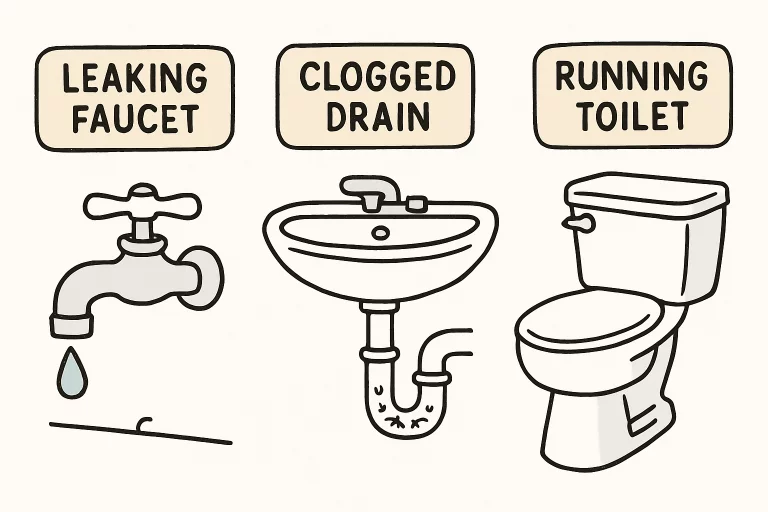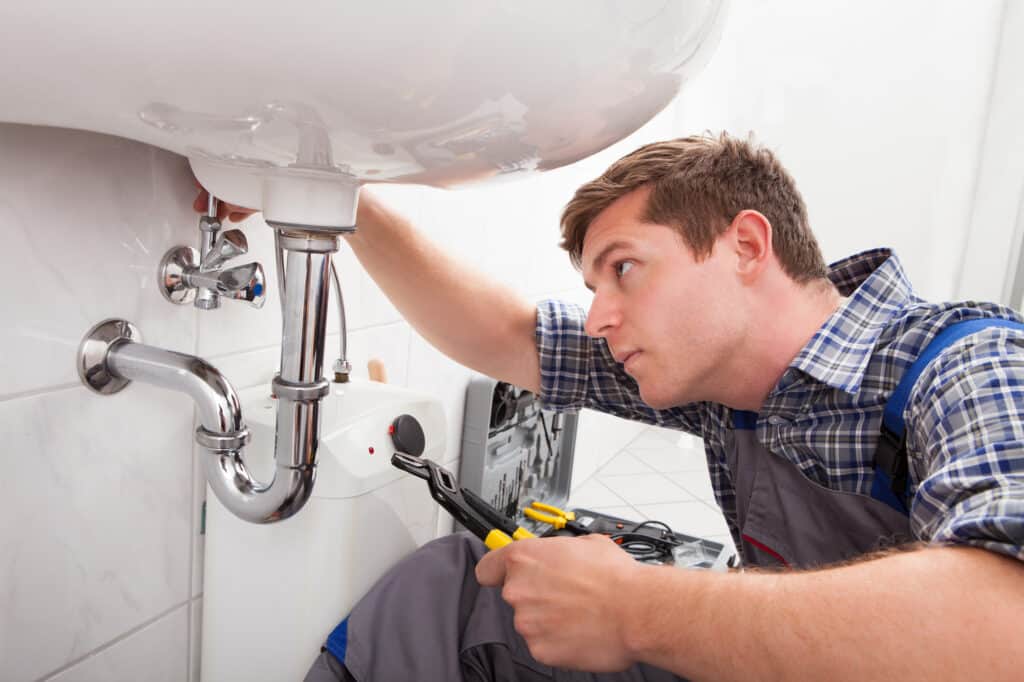Maintaining a functional and efficient plumbing system is an essential responsibility for every homeowner. Even minor annoyances like a dripping faucet can escalate into larger, far more expensive problems when plumbing issues are ignored. These issues can cause significant water damage, disrupt your daily schedule, and even decrease the value of your home. On top of that, unchecked plumbing malfunctions can lead to higher water bills, wasted resources, and extended periods without water or basic amenities. For every homeowner—whether new to maintaining a property or has lived in their house for decades—understanding the most common plumbing problems, how to spot them early, and knowing when to call a professional Plumber is crucial for a safe, comfortable living environment.
Plumbing problems often arise suddenly, creating stress and inconvenience. From tackling persistent leaks and clogs to maintaining major appliances like water heaters, adopting a proactive approach significantly improves your quality of life. In this comprehensive guide, you’ll discover frequent plumbing issues, effective preventative strategies, and the many benefits of scheduling routine inspections. With this knowledge, you’ll feel empowered to protect your investment, avoid costly repairs, and ensure your home operates efficiently daily. For more DIY tips and home care resources, you can reference trusted sources such as Family Handyman’s common plumbing problems.
Leaky Faucets and Pipes
One of the most frequent plumbing headaches is a leaky faucet. Although many homeowners may ignore a minor drip, the reality is that even a slow, steady leak can add up to thousands of gallons of wasted water each year, directly impacting your monthly utility bills. The typical causes of faucet drips include worn rubber washers that no longer create a watertight seal, corroded valve seats, or faulty seals inside fixtures. Often, these problems can be fixed easily by replacing a small part, saving you both money and resources. If a simple DIY fix doesn’t solve the issue, or the leak persists, it could be a symptom of deeper, more widespread problems within your plumbing system, such as high water pressure or pipe deterioration.
Pipes tucked behind walls, beneath floors, or above ceilings are especially vulnerable to leaks, particularly in older homes or regions that experience seasonal freeze-thaw cycles. Because these leaks are hidden, they often remain undetected until warning signs emerge, such as discoloration, warped drywall, or persistent musty smells. Left unchecked, they can inflate your utility bills, trigger mold growth, and cause significant structural damage. A smart preventive step is partnering with an experienced plumbing contractor for routine inspections. A qualified professional can identify minor leaks early on, helping homeowners avoid the extensive repairs and costly restoration that often follow unchecked water.
Clogged Drains and Toilets
Clogged drains and toilets are among the most common and disruptive plumbing problems faced by homeowners. Blockages can occur in kitchen sinks, bathroom drains, or toilets, and each case requires different solutions. Kitchen sinks often develop clogs when grease, oils, and food debris build up over time, while bathroom drains become blocked due to hair, soap scum, and residue from personal care products. Toilets can get blocked when non-flushable items or excessive paper are forced down, leading to messy and inconvenient backups.
Common Causes of Clogs
- Hair and soap residue frequently collect in showers and bathroom sinks, constricting water flow and causing water to back up.
- Grease and food scraps in kitchen drains harden and adhere to the sides of pipes, eventually causing severe blockages.
- Non-flushable items such as wipes, feminine hygiene products, cotton swabs, or “flushable” cat litter do not break down like toilet paper and can easily jam plumbing lines.

To avoid these issues, use drain screens in sinks and tubs, and educate household members—especially children—about what should never be flushed or poured down the drain. A plunger or basic plumbing snake usually does the trick for a minor clog; however, persistent or recurring clogs could indicate a larger obstruction or even problems with your main sewer line. These situations require professional assessment to prevent the risk of pipe rupture or costly repairs. Another valuable resource is this comprehensive guide to common plumbing problems from This Old House.
Low Water Pressure
Low water pressure impacts everything from showering to washing dishes and watering the lawn, turning routine tasks into sources of frustration. In most homes, low water pressure originates from mineral deposits or debris clogging faucet aerators, corrosion building up inside aging pipes, undetected leaks, or pressure fluctuations from the municipal supply. Sometimes, the problem is isolated to a single fixture, while the entire house may be affected in other cases.
Diagnosing the Issue
If every faucet and shower in your home has low pressure, the problem could be a failing main line or a malfunctioning pressure regulator. For isolated fixtures, try unscrewing and cleaning or replacing the aerator. If cleaning doesn’t resolve the issue or your water pressure drops suddenly and stays low, seek immediate help from a professional plumber who can perform a comprehensive system assessment. They can spot hidden leaks, pressure valve problems, or pipe blockages that aren’t visible to the naked eye.
Water Heater Issues
Hot water is necessary for modern living, from bathing and laundry to dishwashing and cooking. Unfortunately, water heaters are often overlooked until they begin causing problems. Signs of trouble include temperature fluctuations, loud banging or popping noises from sediment inside the tank, or water pooling around the base. Most issues develop due to sediment accumulating in the tank, aging heating elements, or a malfunctioning thermostat. Failing to maintain your water heater can drastically shorten its life, resulting in untimely breakdowns and expensive replacements.
Signs Your Water Heater Needs Attention
- Water that fails to reach the desired temperature or runs cold much sooner than expected
- Unusual sounds—like rumbling, knocking, or popping—coming from the heater, often due to sediment buildup
- Leaks or water damage around the base, which could signal a corroded tank or faulty connections
Don’t ignore these warning signs—schedule annual water heater flushes and routine inspections by a plumbing professional to prevent expensive emergencies and to extend the working life of your appliance.
Running Toilets
A running toilet is far more than a minor annoyance—it can quietly waste up to 200 gallons of water daily, dramatically increasing your water expenses. The most common reason for a running toilet is a faulty flapper valve, which can no longer create a tight seal, causing water to leak into the bowl continuously. Replacing a flapper valve is straightforward and inexpensive, often providing an immediate solution. If the toilet continues to run, sediment buildup in the tank or a more complex internal component malfunction is likely at fault, so it’s wise to call a plumbing professional for an expert evaluation.
Prompt repairs of a running toilet reduce your water bill and help reduce your home’s environmental footprint, conserve natural resources, and maintain the optimal function of your plumbing system.
Preventive Measures and Regular Maintenance
Preventing plumbing problems is easier and less expensive than dealing with the aftermath of water damage or significant repairs. Regularly scheduled inspections and maintenance exercises are the homeowner’s best tools in avoiding sudden breakdowns. Take a few minutes each month to visually inspect all visible piping and fixtures for drips, leaks, and corrosion. Check around appliances—such as dishwashers, washing machines, and water heatersexteheaters- extendance’s working lifewhich mlife, which hidden leaks or mold growth.
- Flush your water heater yearly to remove sediment, prevent rust, and improve heating efficiency.
- Clean faucet aerators and showerheads regularly to ensure strong, consistent water flow.
- Install mesh strainers in all drains to capture hair, food, and foreign material before it enters your plumbing lines.
- Remember, only flush toilet paper—never sanitary products, wipes, or paper towels.
- Arrange for comprehensive plumbing inspections by a trusted plumber at least once a year to identify issues you may otherwise overlook.
By sticking to these preventive strategies and addressing problems promptly, you’ll protect your home and family from the disruption and expense of unexpected plumbing failures. If you ever feel uncertain or encounter a plumbing emergency, always seek out the knowledge and skill of a reputable local plumbing expert to ensure your system gets the best care possible.
Ultimately, understanding the most common plumbing problems—and how to prevent them—gives you greater peace of mind, saves you money on utility bills, and ensures a safe, comfortable, and well-maintained home for years to come.





